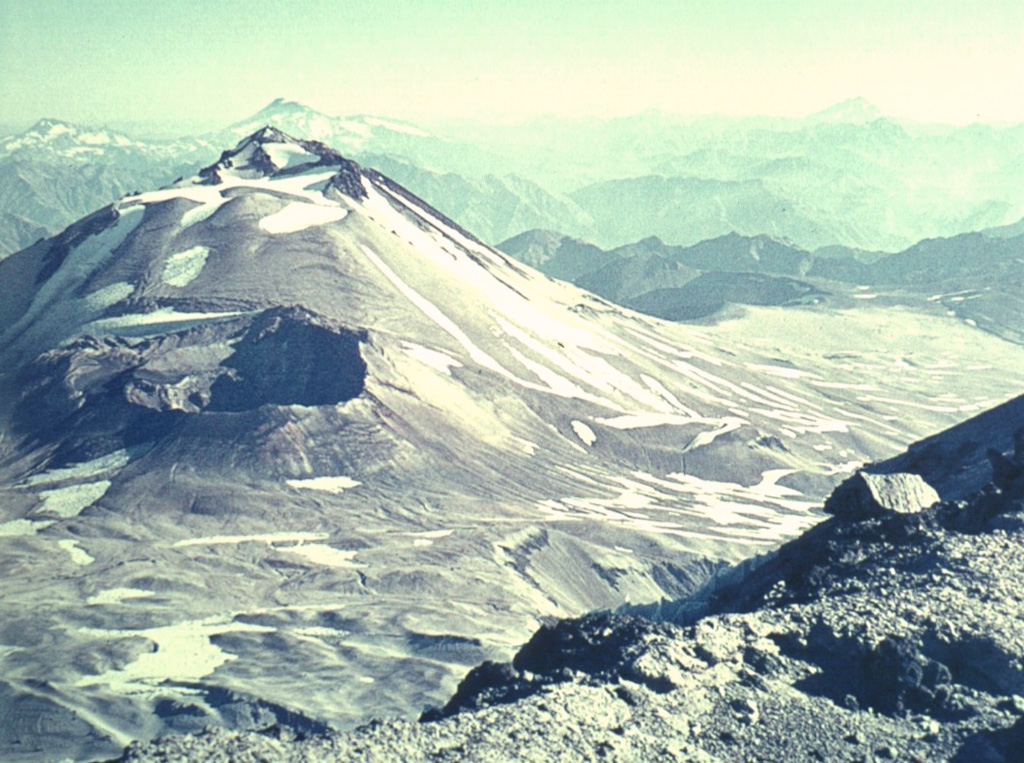Image GVP-06940

The gaping crater of the 1932 Quizapú eruption (left-center) lies below the summit of Cerro Azul stratovolcano. Cerro Azul was constructed to the south of its twin volcano Descabezado Grande, where this photo was taken. Steep-sided Cerro Azul has a 500-m-wide summit crater that is open to the north. Quizapú was the source of one of the world's largest explosive eruptions of the 20th century in 1932. This eruption created a 600-700 m wide, 150 m deep crater and ejected 9.5 cu km of dacitic tephra.
Photo by Oscar González-Ferrán (University of Chile).
![]() This image is made available under the Creative Commons BY-NC 4.0 license terms.
This image is made available under the Creative Commons BY-NC 4.0 license terms.

Cerro Azul
